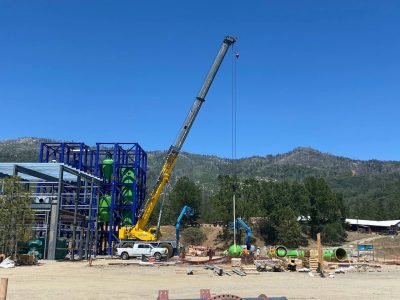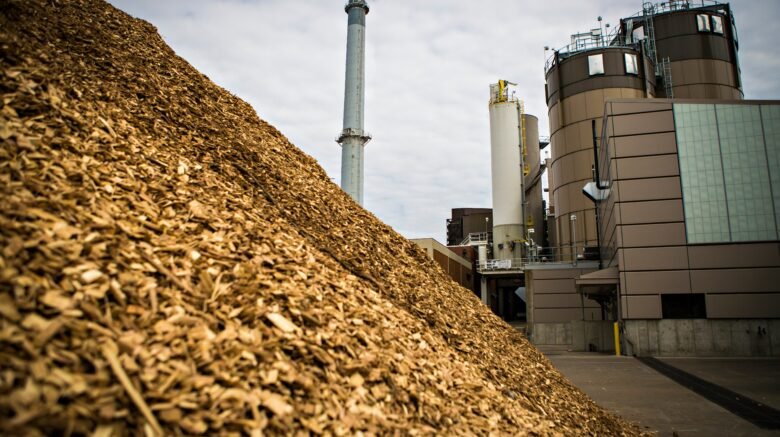In an era where environmental sustainability is paramount, exploring alternative energy sources becomes imperative. One such promising avenue is biomass energy generation, particularly in rural areas where forests and agricultural residues can be harnessed to produce clean and renewable energy.
There are many advantages to biomass electricity generation:
- Utilizing Forest Slash: Biomass energy generation offers a unique solution to the environmental challenges posed by forest slash – the debris left behind after logging or forest management activities. In rural areas, these residues often contribute to wildfires and emit harmful pollutants. By utilizing forest slash as a biomass feedstock, communities can turn a potential environmental hazard into a valuable energy resource.
- Renewable and Carbon-Neutral Energy: Biomass energy is considered carbon-neutral since the carbon dioxide released during combustion is roughly equal to the amount absorbed by the plants during their growth. This characteristic distinguishes biomass from fossil fuels, making it a sustainable alternative. In rural areas, where agriculture and forestry are integral, biomass energy generation aligns with the natural cycles of plant growth and decay.
- Promoting Rural Development: Biomass energy projects, such as the North Fork Biomass Plant in California, contribute significantly to local economies. They create jobs, both in the construction and operation phases, fostering economic growth in rural communities. Additionally, biomass facilities often partner with local businesses for the supply of feedstock, creating a symbiotic relationship that supports regional development.
- Reducing Greenhouse Gas Emissions: By replacing traditional fossil fuels with biomass energy, rural areas can significantly reduce their carbon footprint. The combustion of biomass releases far fewer greenhouse gases than coal or natural gas. As a result, embracing biomass energy generation contributes to mitigating climate change and enhances the overall environmental sustainability of rural communities.
- Diversifying the Energy Mix: A key advantage of biomass energy is its capacity to diversify the energy mix. Rural areas, often dependent on a single energy source, can enhance energy security by incorporating biomass into their portfolio. This diversification not only ensures a stable energy supply but also promotes resilience in the face of external shocks, such as fluctuations in fuel prices.
Case Study: North Fork Biomass Plant, California

In the heart of North Fork, California, where towering pines and rugged landscapes meet, a groundbreaking initiative is taking root. The North Fork Biomass Project, like a quiet force of nature, promises to reshape the community’s energy landscape while nurturing its forests.
A Greener Vision
Overview: The North Fork Biomass Project isn’t just about kilowatts and infrastructure—it’s a vision for a sustainable future. Nestled among the whispering pines, a state-of-the-art 2-megawatt biomass plant hums with purpose. Its mission? To harness the latent energy within the forest itself.
The Forest’s Gift: Here’s where it gets fascinating. The plant won’t rely on fossil fuels or distant power grids. Instead, it turns to the very trees that surround it. Those fallen giants—the ones that once stood tall but now lie scattered across the forest floor—become its fuel. Dead trees, branches, and other biomass materials find new life as electricity.
The Mechanics
Inside the plant, massive gas engines roar to life. They’re like modern-day alchemists, converting wood chips, bark, and forest residues into clean, renewable power. The result? A steady stream of electricity that lights up homes, schools, and businesses in North Fork and beyond.
Local Impact: But this project isn’t just about watts and volts. It’s about people. Over a dozen local jobs will sprout up alongside the plant. Imagine skilled technicians, tree experts, and engineers working together to breathe life into this green powerhouse. The North Fork Community Development Council (CDC) stands at the forefront, championing both economic growth and environmental stewardship.
The Financial Roots
Tax Credits and Bonds: The project secured millions in state tax credits—a lifeline that fueled its $15 million budget. The deal closed just before the clock struck midnight on New Year’s Eve, 2019.
A Decade in the Making: But let’s rewind. The idea for this biomass marvel has been simmering for nearly a decade. It weathered delays, bureaucratic twists, and even the shadow of PG&E’s bankruptcy. Yet, against all odds, the groundbreaking ceremony finally took place in 2016. The forest held its breath, knowing that change was afoot.
A Forest’s Resilience
Beyond Kilowatts: The North Fork Biomass Project isn’t just about kilowatts; it’s about resilience. It’s about turning forest management into a sustainable form. By clearing deadwood, we prevent catastrophic wildfires. By converting that wood into energy, we create a more resilient energy source for the local community.
For more in-depth reading, explore these articles:
- Sierra News Online
- Developer: Construction of NF Biomass Plant Could Begin Soon
- EQTEC – North Fork, USA, Gasification Plant
It’s not all roses for biomass
It’s crucial to highlight that while biomass is a renewable source of energy, it does come with its own set of disadvantages. One of the primary concerns is the emission of greenhouse gases. Although biomass is often touted as carbon-neutral, the process of burning biomass releases carbon dioxide into the atmosphere. This contributes to global warming, which is a significant environmental issue. Furthermore, the combustion process can also release other harmful pollutants, such as particulate matter and nitrogen oxides, which can have detrimental effects on air quality and human health.
The energy output from biomass is relatively low compared to other sources, such as solar or wind, making it a less efficient option for electricity generation.
However despite these drawbacks it essential to have continued investment in biomass technology. This investment will result in new technologies that will be more efficient. This is where tax breaks and government investment can help accelerate the acceptance (just as happened with solar). Biomass can significantly help to increase the resilience of the electricity supply, while using the waste product of active forest management, and revitalize rural communities.
